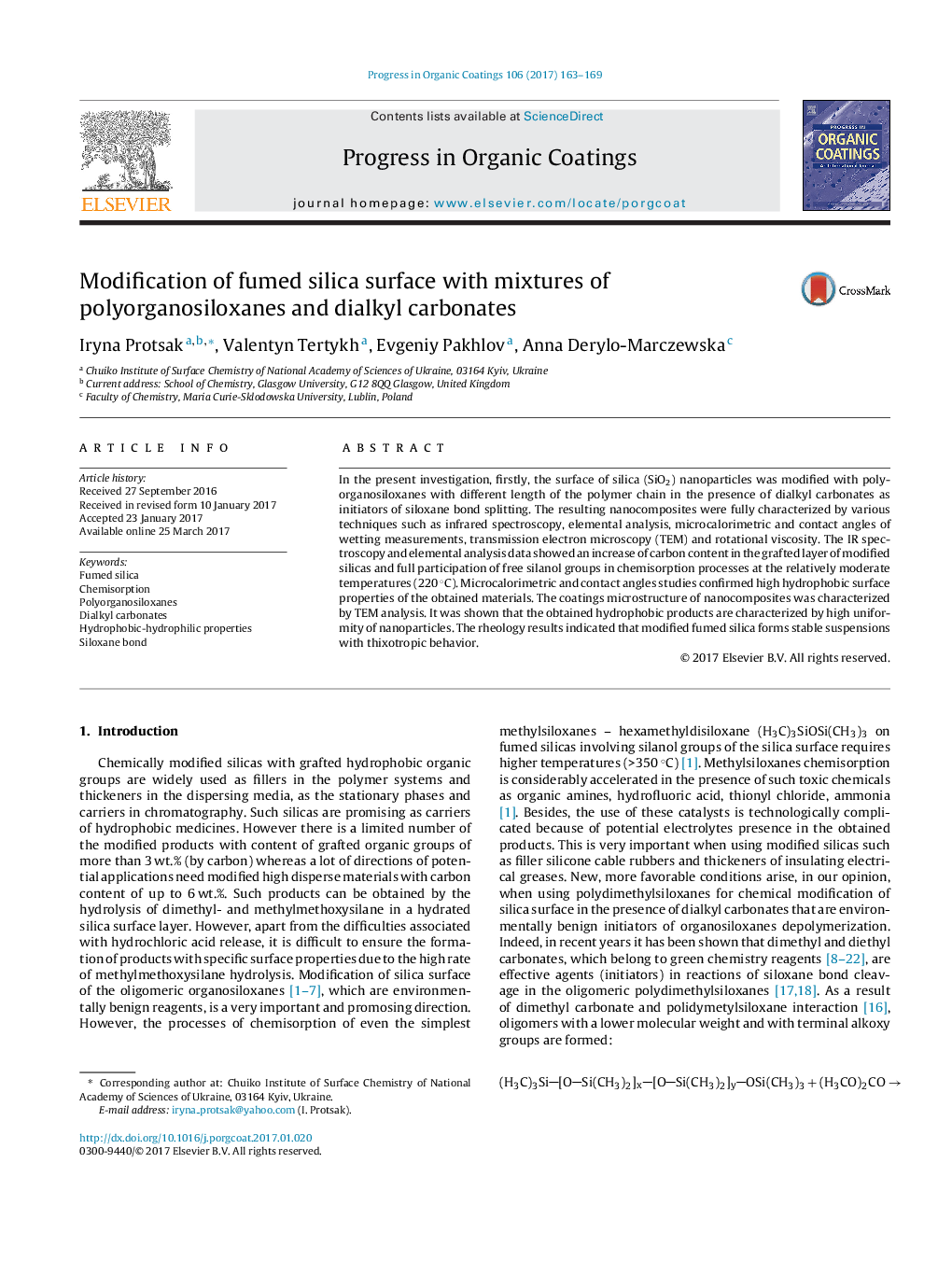| Article ID | Journal | Published Year | Pages | File Type |
|---|---|---|---|---|
| 4999431 | Progress in Organic Coatings | 2017 | 7 Pages |
Abstract
In the present investigation, firstly, the surface of silica (SiO2) nanoparticles was modified with polyorganosiloxanes with different length of the polymer chain in the presence of dialkyl carbonates as initiators of siloxane bond splitting. The resulting nanocomposites were fully characterized by various techniques such as infrared spectroscopy, elemental analysis, microcalorimetric and contact angles of wetting measurements, transmission electron microscopy (TEM) and rotational viscosity. The IR spectroscopy and elemental analysis data showed an increase of carbon content in the grafted layer of modified silicas and full participation of free silanol groups in chemisorption processes at the relatively moderate temperatures (220 °C). Microcalorimetric and contact angles studies confirmed high hydrophobic surface properties of the obtained materials. The coatings microstructure of nanocomposites was characterized by TEM analysis. It was shown that the obtained hydrophobic products are characterized by high uniformity of nanoparticles. The rheology results indicated that modified fumed silica forms stable suspensions with thixotropic behavior.
Related Topics
Physical Sciences and Engineering
Chemical Engineering
Process Chemistry and Technology
Authors
Iryna Protsak, Valentyn Tertykh, Evgeniy Pakhlov, Anna Derylo-Marczewska,
